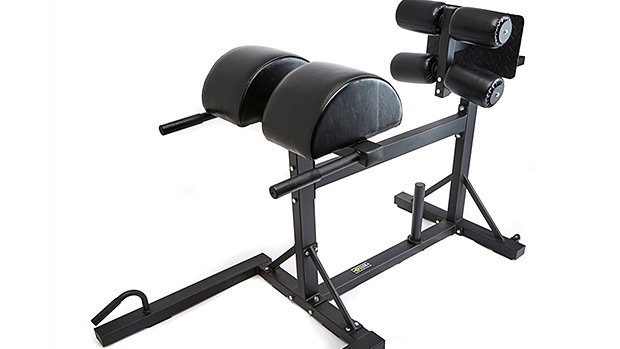Of all the equipment in the gym, the GHD is one of the most misused. GHD stands for "glute-ham developer" (and sometimes "good hair day," but that's another topic). It doesn't have the word "sit-up" or "abs" in the name, yet that's what many people use it for.
The most flagrant violation happens when people do really ugly looking sit-ups on it. They let their backs arch violently into extension and work their hip flexors, quads, and anything except their core to get each painful rep.
This is a lower back disaster waiting to happen and should pretty much be avoided unless you have to do it in a CrossFit competition.

Public service announcement: The primary purpose of this machine is to develop the glutes and hamstrings. Here are some legitimate ways to use the GHD, plus a common mistake to avoid.
- Begin with your thighs on the GHD pad, torso perpendicular to the floor and feet securely on the back platform.
- Your knees should be placed more on the back of the pad to prevent excessive stress to the back of the knee.
- Brace your core and contract your glutes and hamstrings while slowly extending your knees, lowering your body so that it becomes parallel with the floor.
- Do NOT hyperextend your knees by going to full lockout.
- Use your glutes and hamstrings to pull yourself back to the starting position.
- Maintain a straight line through the knees, hips, lower back, and neck for the duration of the lift.
The main difference between this and the classic GHD exercise is that you dive towards the floor instead of letting the body come parallel to the floor. This variation will act more like a leg curl and changes the angle of pull on the hamstrings. Your back should still remain neutral at all times.
This variation involves no joint movement through the knee. I like to use this with beginners so they understand how to hinge through their hips. You can do this version with the legs straight, but most lifters will rely too much on their low backs to make it to the top. Instead, opt for a slight knee bend and keep a straight upper body as you hinge through your hips.
If you're doing it like this, you're going to have low-back issues. Your lower back should remain neutral at all times. You're much better off cutting a few reps, moving the pin back on the GHD to make the lift easier, or doing the hip hinge-only variation.




